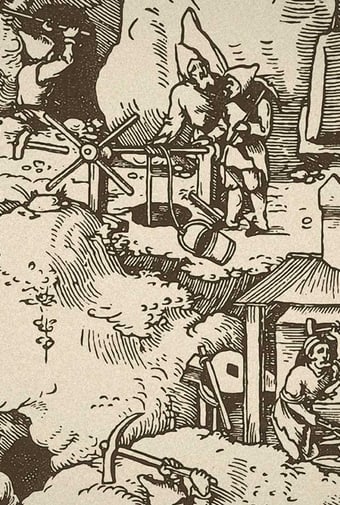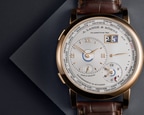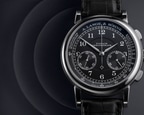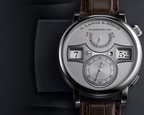Not far from Christiansdorf, now known as Freiberg, Germany, traders happen upon silver ore in 1168 and announce what will go down in history as the first discovery of rich ore deposits there. The inhospitable Erzgebirge suddenly become a magnet for miners, traders, charcoal burners and vagabonds. The silver rush creates wealth in these parts of Saxony that will last several centuries – a significant factor in the development of the intricate art of watchmaking in later times.
The first official record of Glaßehutte dates back to 1445. The place owes its name to the fascinating transparent material, glass (Glaße), while Hutte refers to a workshop. Yet the discovery of silver ore here in 1490 is also crucial to the little town’s development.
Four hundred years after news of the rich ore deposits first spread, the Erzgebirge has become a hub of the European mining industry. Jobs are created, not just for pit workers. An increasing number of crafts specialists move in to work on the earth’s treasures. Mining supports the teaching and refinement of typical Saxon crafts skills.
With geopolitical ambition and numerous regulations and reforms, Elector Augustus (1526–1586) helps to bring about an economic upturn in Saxony. Like many monarchs of the period, he discovers his passion for collecting. In 1560, he founds a chamber of art, or “miracles”, in Dresden. It is filled with everything he finds fascinating: images, weapons and jewellery, crafts, curiosities and consumer goods – as well as mechanical, astronomical and measuring instruments. This chamber of art is the foundation for the royal cabinet of mathematical and physical instruments, hived off in 1729, which, under Johann Gottfried Köhler, will become crucial for the development of precision time measurement.
Times of need and new beginnings
In Saxony, the years that follow the Thirty Years War (1618–1648) are devastating. The population is decimated by half – due in large part to the plague. The wealth acquired melts away, but the people don’t give up. Instead of silver, new earthly treasures are mined: iron, tin, lead, copper, bismuth, serpentine. The Saxons work with these raw materials – and the first specialist manufactures appear around the bigger cities.
The oldest craft professions include the goldsmith trade. Goldsmiths begin working in Saxony as early as 1368. As Augustus the Strong’s court jeweller, Johann Melchior Dinglinger helps his crafts enjoy a golden age in the baroque period. Dinglinger’s delights, which he also produces for the Russian Tsar Peter the Great, can be seen in the Grünes Gewölbe museum in Dresden in 2018.
The early days of watchmaking
The beginning of watchmaking in Saxony cannot be dated to a precise point in time. We know that the core of a general guild was formed by the first watchmakers’ association in 1540 – and in Dresden, no less. The first watchmakers belong to the guild of smiths; this is because smiths and metalworkers originally produced timepieces.
Explore further



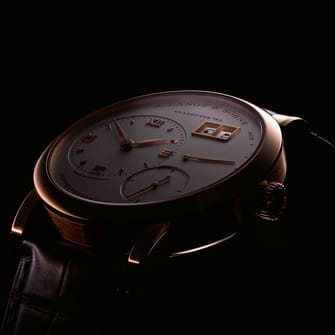
Exclusive insights into the world of fine watchmaking
Experience A. Lange & Söhne’s fascinating heritage, unique stories and exquisite timepieces by subscribing to our newsletter.
